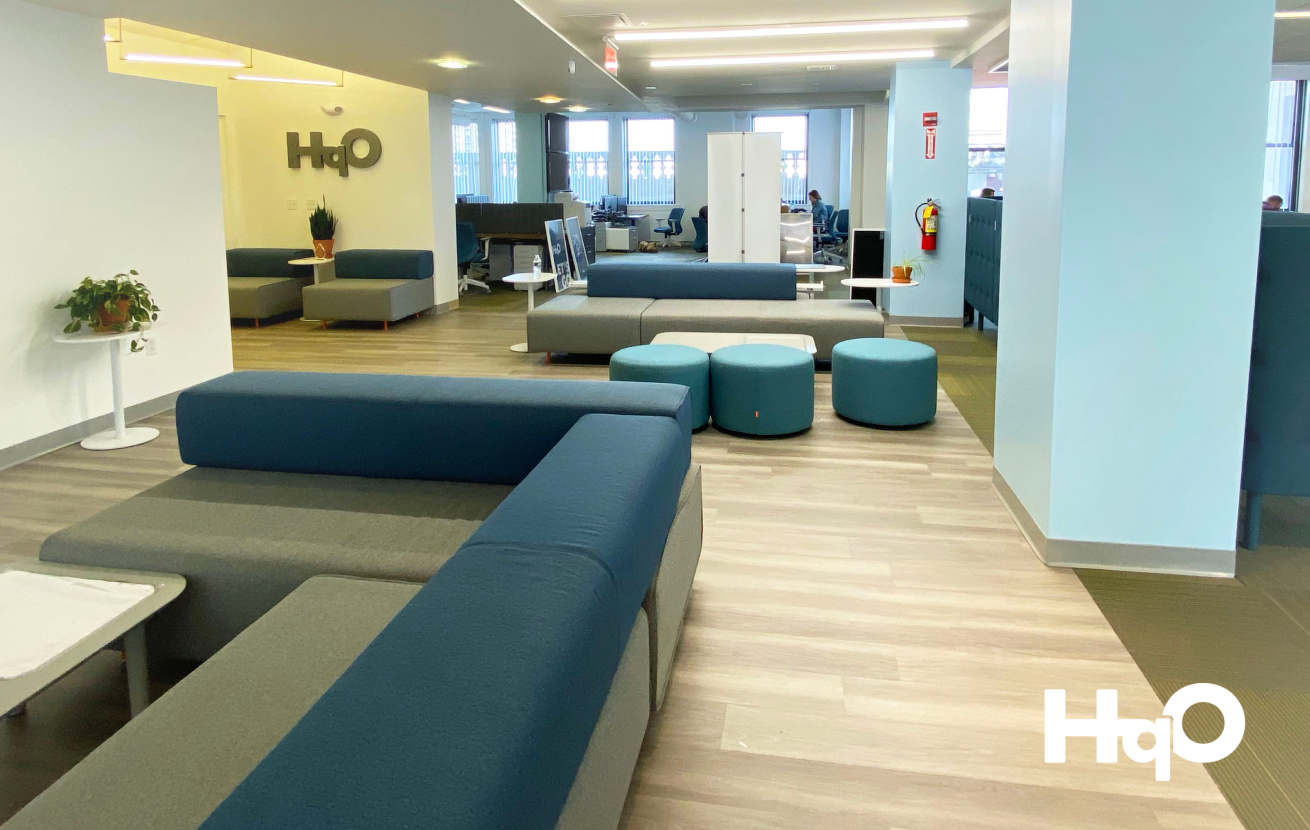Google has become well-known as one of the best places to work in the world. The company focuses on the employee experience better than any other — its offices are amenity rich, featuring coffee bars and restaurants, gyms, massage services, dry cleaning pick-up and drop-off, and so much more. It is truly an experience worth leaving home for. I know, because I spent eight years there.
When I decided to leave Google to join HqO, I took a few weeks of time off in-between. One day, my wife and I took a ride into Boston together. While we were in town, I suggested stopping by the HqO office to select my benefits and sign off on my new hire paperwork. “You’re going to work in that office?” my wife asked incredulously (and slightly concerned).
It was the only office we had, so of course, the answer was yes — however, it was pretty terrible. The office was literally in a parking garage. If you didn’t know the office was there, you wouldn’t be able to find it. It was dark and cramped. The temperature control was essentially no control. It had no room for personal space. There was a makeshift kitchen which was borderline unusable. But, I showed up every day because that’s where work was. My company had chosen the office and I had to go there to work.
Today, the world has shifted. COVID has accelerated the flexibility trend which was already underway. It forced companies to adopt remote work. Now, just about any office worker in the US can work remotely if he/she chose to. The adoption of new technologies has made this easy, and there are several conveniences of working remotely. The 30 second commute to downstairs is pretty awesome, and I definitely want to maximize my new collection of sweatpants.
Despite the ability to work remotely, I still go into the office most days. In September 2019, HqO moved into a new office. We’re on the 12th floor of a building with lots of space and windows on all sides. We get tons of light. The office has a beautiful kitchen with white dishes and silver utensils. We have cold brew coffee, a state-of-the-art beverage machine, and more. Our building offers tenants access to an on-site gym and amenity center. Right downstairs from the office there is a CVS, Starbucks, sweetgreen, and bar with outdoor seating. The office is also right across the street from a parking garage, so it’s convenient to get in and out.
Right now, occupancy rates are at all-time lows. Buildings are more valuable when there are people in them. That’s why fully leased buildings often trade at lower cap rates than those with high levels of vacancy (assuming rents are strong in both cases). If landlords want to bring people back to the office, it’s going to take some work.
At HqO, we talk often about the three problems that we are trying to help the commercial real estate industry solve: attraction, fragmentation, and differentiation.
Attraction isn’t just about attracting tenants anymore. Most companies spend 90% of their operating expenses (OpEx) on their employees. Helping tenant companies to attract and retain talent — their employees — can take the landlord-tenant relationship to new heights. Solving your customer’s biggest problem creates loyalty and increases value.
Unifying the fragmented experience through a platform can help landlords to play a bigger role. Creating a tech stack in the building that is offered to users in the form of a remote control for the building enables them to consolidate all of their activities — from accessing the building, to ordering a coffee, to booking a conference room in the amenity center — and provides a better user experience by reducing friction.
But to know how to invest properly requires data. According to a recent study by Ernst & Young, data and tenant experience are the top two priorities for landlords post-COVID. Ensuring that the investments are going to create the most value for users means taking a data-driven approach.
At HqO, our building is now amenity rich. It’s convenient to get to. It allows me to collaborate with my team, and learn from quick conversations in real-time. I have access to everything I need, right when I need it. I choose the office. And I do have a choice. If we were still in our old office, there is little chance I would be going into the office for work.
Like many companies, HqO is still managing through the return to office. But what I’ve observed over the last few months since I’ve been back is that more and more people are showing up every day. More and more people are choosing the office, because this office is worth choosing.



